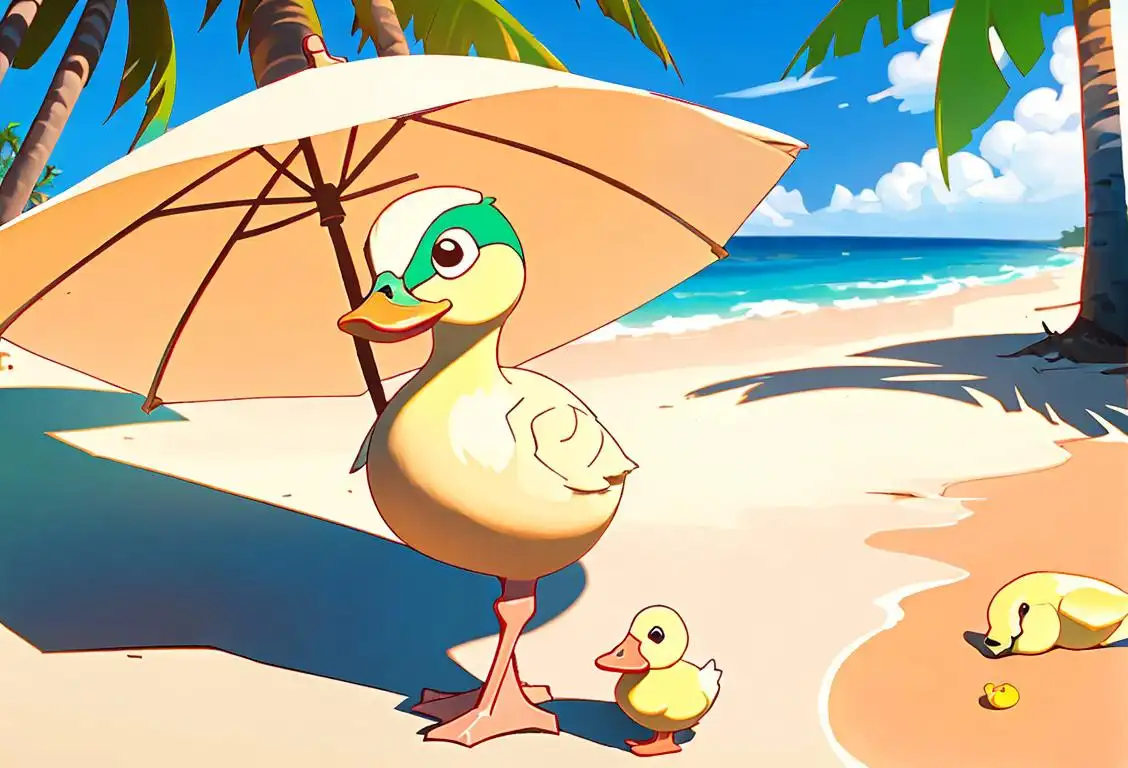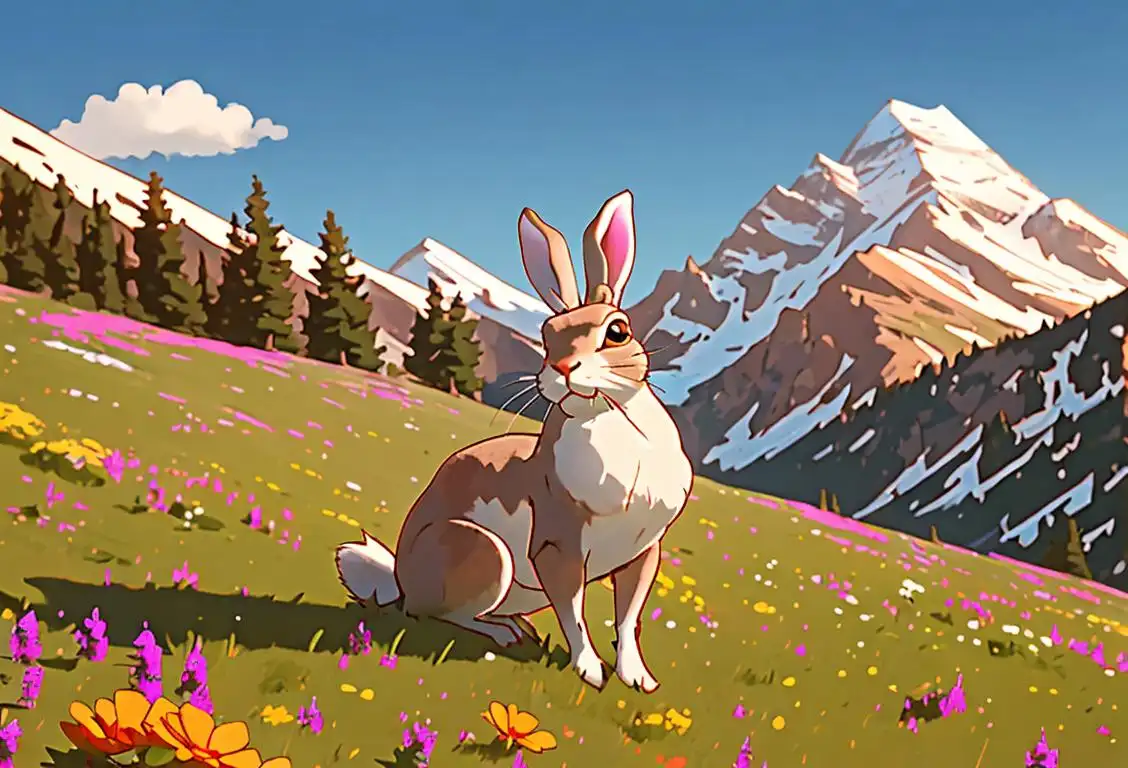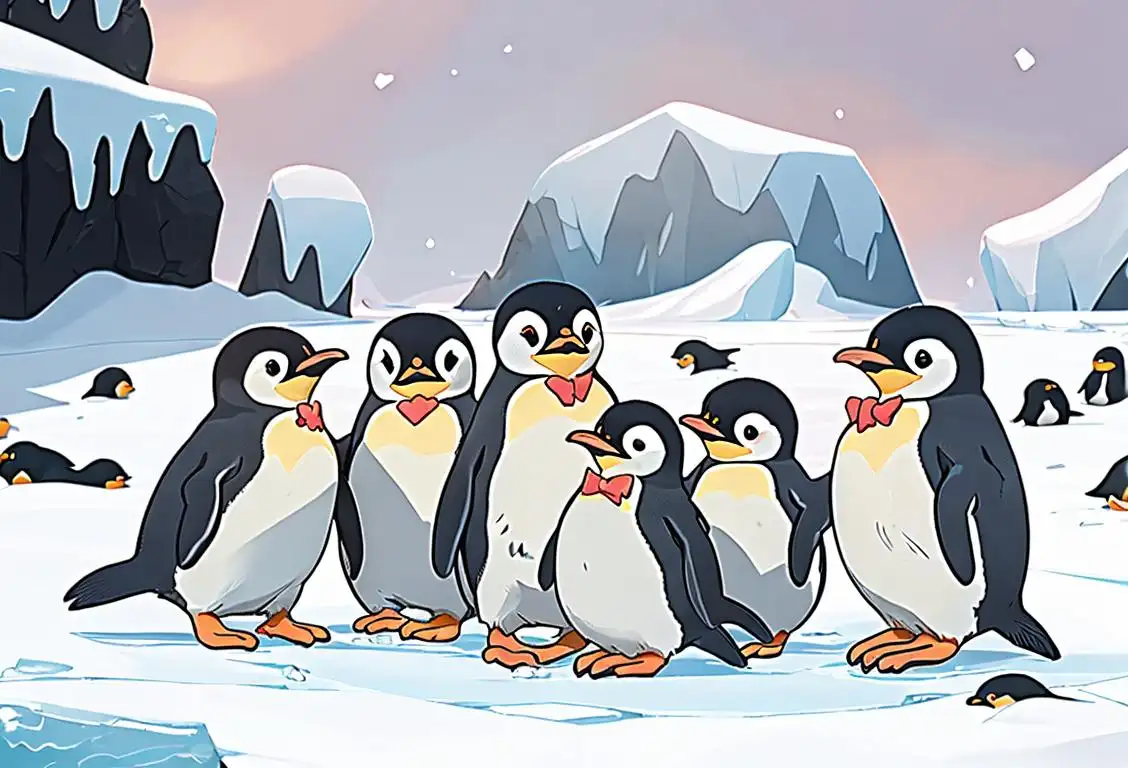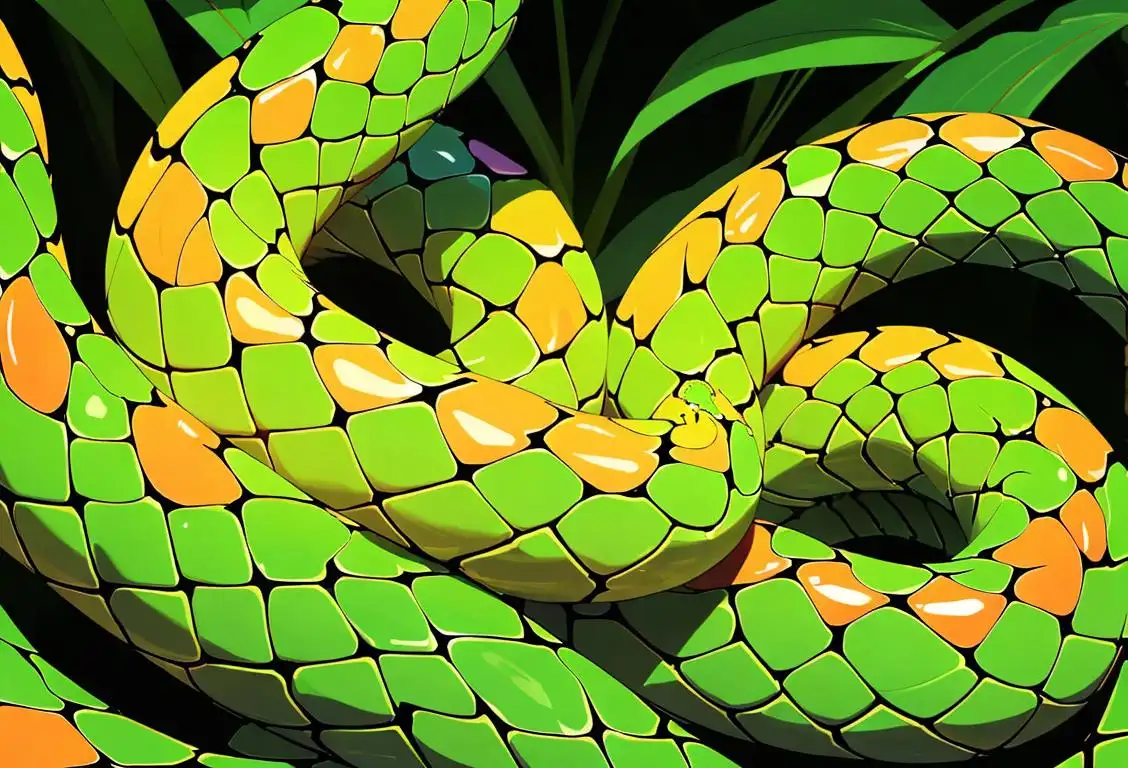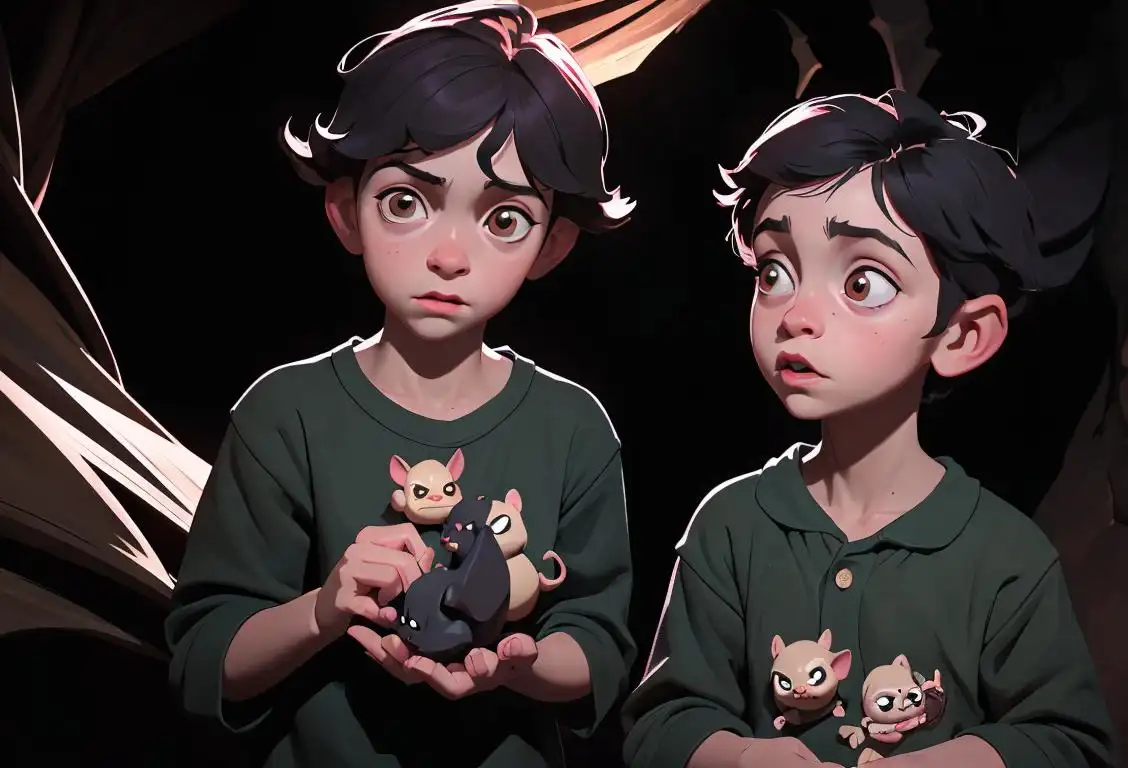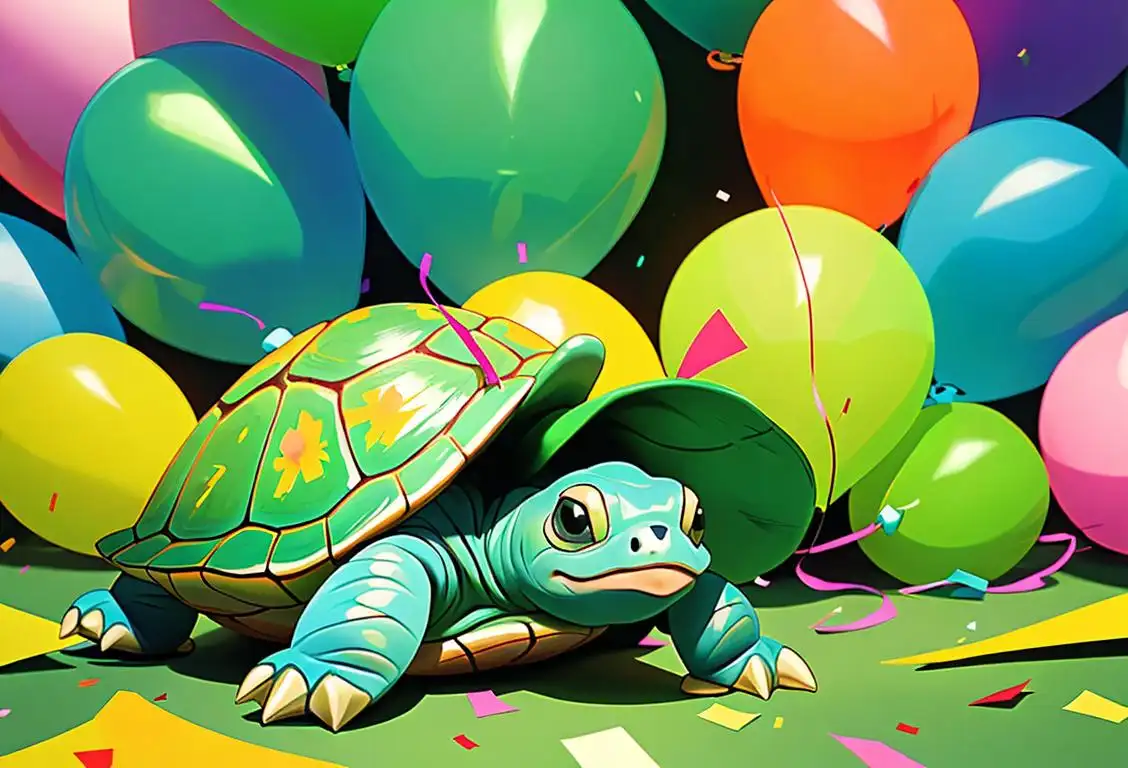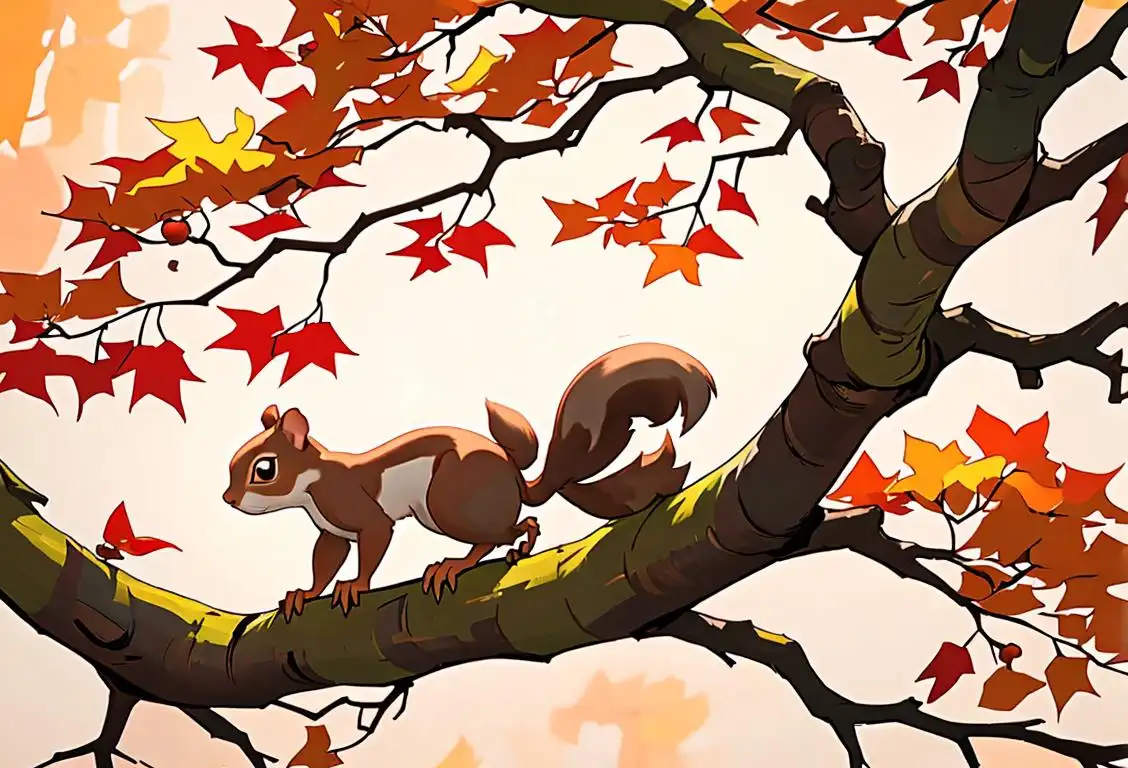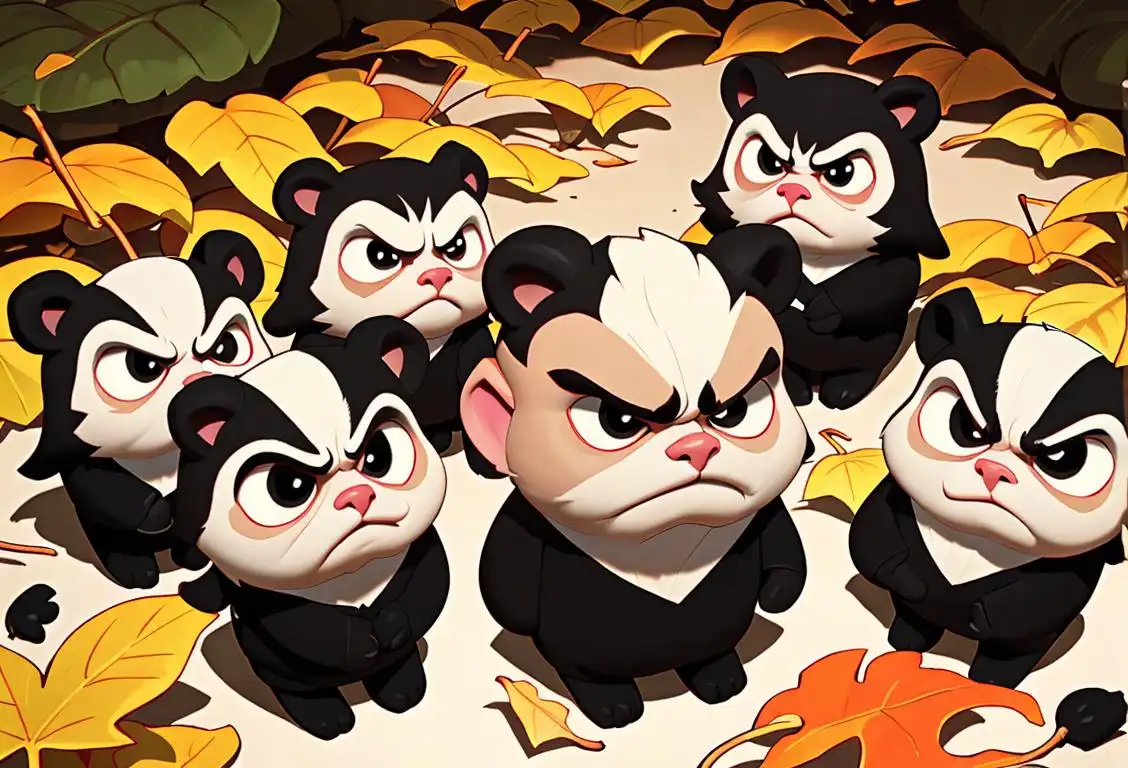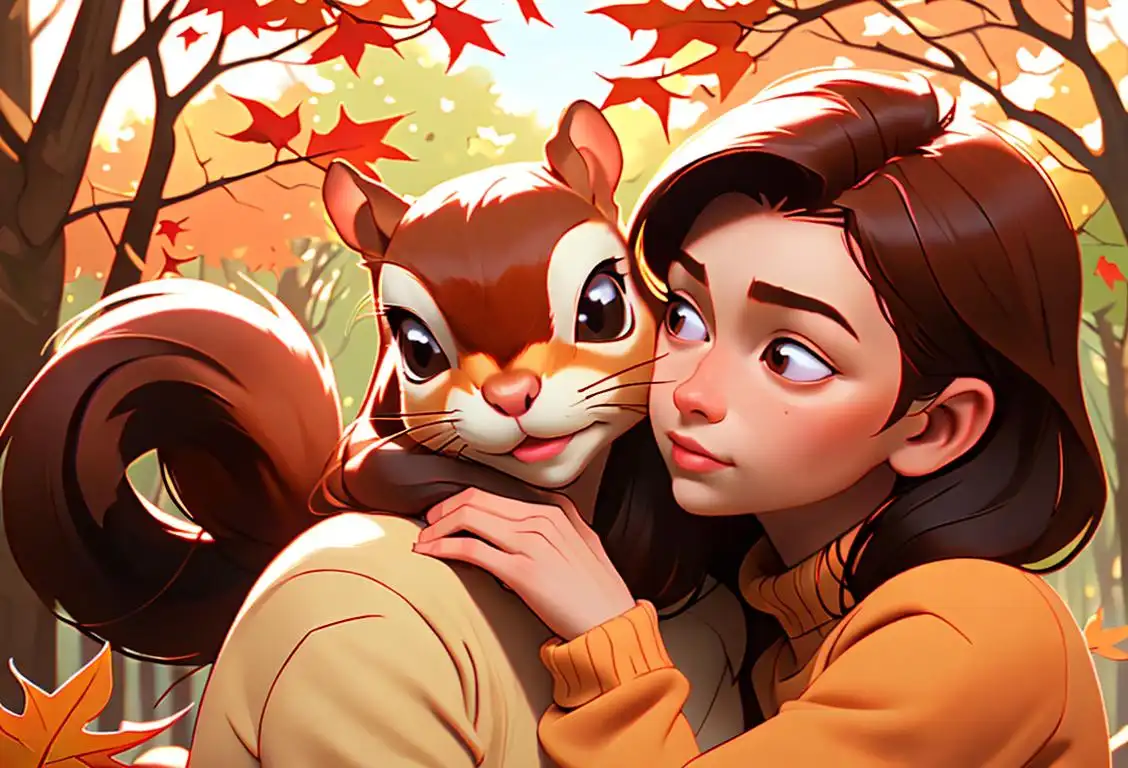National Hug A Squirrel Day
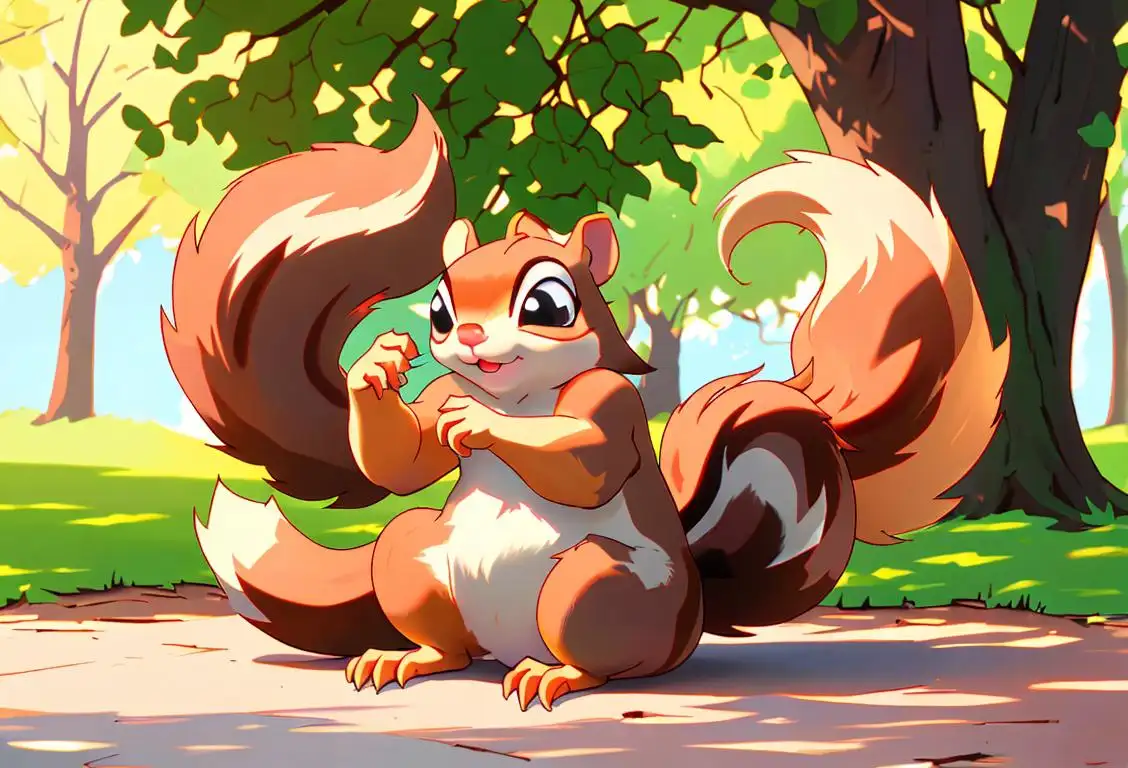
Welcome to National Hug a Squirrel Day! Get ready to embark on a whimsical adventure into the land of fluffy tails and cheeky antics. This delightful day celebrates our bushy-tailed friends and encourages us to embrace the squirrely joy that they bring to our lives. So grab your squirrel-sized hugging arms and let's dive into the wonderful world of squirrels!
When is Hug A Squirrel Day?
It's national hug a squirrel day on the 21st January.
The Origins of National Hug a Squirrel Day
Now, you might be wondering, how on earth did National Hug a Squirrel Day come to be? Well, my curious friend, we have the ever-fascinating internet to thank for that! This special day first gained traction in the online world, with squirrel enthusiasts and animal lovers alike joining forces to spread the squirrel love. It quickly became a viral sensation, with adorable videos of people hugging squirrels melting hearts across the globe.
As the squirrel hugging frenzy continued to gain momentum, National Hug a Squirrel Day found its place on the calendar. On January 21, 2016, it reached peak popularity, with squirrel-hugging photo challenges, virtual events, and heartwarming stories flooding social media feeds.
Embracing the Squirrely Love
Now that we know the origins of this enchanting day, let's dive into the art of squirrel hugging. It's important to remember that squirrels are wild animals, and not all of them may be open to receiving hugs. So, how can we show our love and appreciation without causing any harm? Here are some squirrel-friendly alternatives to bear in mind:
- Leave out some tasty treats for these little acrobats to enjoy.
- Create a squirrel-friendly environment in your backyard with bird feeders and ample trees for them to climb.
- Take photos or videos of these delightful creatures from a safe distance and share them online to spread the squirrel love.
Did You Know?
Here's a fun fact for you: Did you know that squirrels have a superpower? It's true! These furry acrobats have the incredible ability to leap up to 20 feet in a single bound. That's some serious hopping power! So next time you see a squirrel bounding through the trees, marvel at their superhero-like skills.
History behind the term 'Hug A Squirrel'
1950
The Squirrel Conservation Movement Begins
In the 1950s, the Squirrel Conservation Movement gained traction, with various organizations focusing on the protection and preservation of squirrel populations. This movement aimed to raise awareness about the importance of squirrels in maintaining ecological balance and promoting biodiversity.
1978
The Birth of the Term
In 1978, the term 'hug a squirrel' was first coined in a small college town. It originated as a playful phrase amongst a group of friends who wanted to promote appreciation and love for all creatures, big and small. The term quickly gained popularity within their social circle.
1835
The rise of squirrel admiration
In the year 1835, the term 'hug a squirrel' first appeared in a collection of poetry by a passionate nature enthusiast. The collection celebrated the beauty and wonders of the natural world, including a heartfelt poem that spelled out the joyous act of hugging a squirrel. This marked the beginning of the cultural fascination with these small, arboreal creatures.
1800
The fascination begins
During the 19th century, naturalists and nature enthusiasts became increasingly fascinated with squirrels. Their playful demeanor and unique acrobatics enchanted people, leading to the growing popularity of squirrel watching as a leisure activity.
2008
The Rise of Hug a Squirrel
In 2008, a video of a man named Rick Sullivan went viral on the internet. The video showcased Rick's unusual hobby of befriending squirrels and giving them hugs. People were both amused and fascinated by Rick's friendly interactions with the furry creatures, which led to the birth of the term 'hug a squirrel.'
1965
The Origins of the Term
The term 'hug a squirrel' first emerged in 1965 as a playful expression used to describe a lighthearted moment of affection towards squirrels. It originated from the idea of expressing care and love towards these small, furry creatures who are often seen scurrying around parks and gardens.
1998
Rise of the squirrel lovers
In 1998, a group of nature enthusiasts came together to form an organization dedicated to the welfare and protection of squirrels. This group believed that squirrels were often misunderstood and underappreciated animals. They started promoting the idea of hugging squirrels as a way to express love and admiration for these creatures.
2002
Hug a Squirrel Day introduction
In 2002, the organization decided to create a special day to raise awareness and celebrate the squirrels. They introduced 'Hug a Squirrel Day' as an annual event to encourage people to get closer to squirrels and appreciate their presence in the environment. The day quickly gained popularity among nature lovers and animal enthusiasts worldwide.
1978
Cultural Impact: Rising Popularity
Throughout the 1970s, 'hug a squirrel' gained popularity as a trend and became a symbol of environmental consciousness. People began to embrace squirrels as a charming representation of urban wildlife, drawing attention to the importance of coexisting with nature in urban spaces. The term spread through various media, such as magazines, newspapers, and television shows, solidifying its place in popular culture.
2010
Spread on Social Media
By 2010, social media platforms like Facebook and Twitter had gained immense popularity. People started sharing videos and pictures of themselves attempting to hug squirrels, following Rick's example. The term 'hug a squirrel' became a trending topic, spreading joy and invoking a sense of environmental awareness.
1973
The Rise of Wildlife Rehabilitation Centers
During the early 1970s, wildlife rehabilitation centers sprang up across the country, fostering injured or orphaned animals back to health. Among these centers, squirrels became a popular species to rescue and rehabilitate due to their abundance in urban and suburban areas.
1902
Hug a squirrel goes mainstream
By 1902, the term 'hug a squirrel' had gained popularity and was used to describe the act of embracing the wild squirrels that inhabited urban parks. As more and more people flocked to these green spaces, squirrels became a beloved symbol of nature in the city. Hugging a squirrel became a lighthearted expression of affection for the natural world amidst the hustle and bustle of urban life.
1925
Squirrel-themed merchandise
In the mid-1920s, the public's fascination with squirrels reached new heights. Squirrel-themed merchandise, such as stuffed toys and trinkets, became popular, reflecting the widespread appreciation for these furry creatures.
1982
Cultural Spread
By 1982, 'hug a squirrel' had transcended its origins and started to become a quirky cultural phenomenon. It was adopted by local environmental activists who used it as a metaphor to encourage people to care for wildlife and preserve natural habitats. The term began to appear in various grassroots campaigns and promotional materials.
1992
National Squirrel Appreciation Day
In 1992, 'Hug a Squirrel' took a significant step forward with the establishment of National Squirrel Appreciation Day on January 21st. This day was created to encourage appreciation and understanding of squirrels and their habitat. It aims to inspire people to observe and celebrate the unique behaviors and characteristics of squirrels while fostering a sense of preservation for their natural habitats.
1995
Hug a Squirrel Day Emerges
In 1995, the term 'Hug a Squirrel' gained popularity as a playful and catchy way to promote the conservation and appreciation of squirrels. The creators of Hug a Squirrel Day aimed to change negative perceptions and encourage people to view squirrels as adorable creatures worthy of compassion and protection.
2012
The Humane Squirrel Hugging Society
In 2012, a group of animal lovers founded the Humane Squirrel Hugging Society. This organization aimed to raise awareness about the importance of protecting wildlife, including squirrels, while promoting gentle and respectful interaction. The term 'hug a squirrel' gained further recognition through the society's efforts.
1950
Squirrels as symbols of care
By the 1950s, squirrels had come to symbolize care and nurturing. Their reputation for taking care of their young and tending to their communities made them a relatable symbol for people advocating for compassion and empathy.
2006
Viral squirrel videos
In 2006, the internet witnessed the rise of viral videos featuring squirrels. People started capturing adorable and amusing moments of squirrels in their natural habitats and sharing them online. These videos showcased the playful and charismatic side of squirrels, making them even more endearing to the public. As a result, the popularity of 'Hug a Squirrel Day' skyrocketed, with more and more people participating every year to express affection towards these delightful creatures.
1968
Environmentalism and squirrel conservation
During the late 1960s, the environmental movement gained momentum, and the need for wildlife conservation became a global concern. 'Hug a squirrel' took on a new significance as a rallying cry to promote the protection of squirrel populations and their habitats. This term served as a metaphor for embracing and safeguarding the natural world, encouraging people to become stewards of the environment.
1995
National Awareness
The year 1995 marked a significant turning point for 'hug a squirrel'. It was during this time that several national wildlife organizations recognized the term's potential to raise awareness about the importance of conservation and animal welfare. 'Hug a squirrel' started to be celebrated as a national day, dedicating a day to appreciate and protect squirrels and their habitats.
2012
Scientific studies on squirrel interactions
In 2012, scientific research on squirrel behavior began to gain momentum. Researchers started studying the social interactions and communication patterns among squirrels. They discovered that squirrels use different techniques, such as tail movements and vocalizations, to express emotions and establish social bonds. These findings further fueled the fascination with squirrels and prompted even more people to embrace the idea of hugging squirrels as a way to connect with them.
1995
The birth of National Hug a Squirrel Day
In 1995, National Hug a Squirrel Day was established to celebrate the unique connection between humans and squirrels. This day serves as a reminder to appreciate the beauty of nature and to advocate for squirrel conservation. It encourages people to interact respectfully with squirrels while promoting public awareness about the importance of preserving wildlife and their habitats.
1982
First 'Hug a Squirrel' event
In 1982, a small community in Colorado organized the first 'Hug a Squirrel' event. The aim was to promote awareness about conservation and wildlife preservation, using the act of hugging a squirrel as a metaphorical gesture representing affection for the environment.
2004
Internet Sensation
With the rise of the internet in the early 2000s, 'hug a squirrel' found a new life online. Memes, videos, and social media posts featuring cute squirrels and the call to 'hug a squirrel' went viral, spreading the message of compassion and environmental consciousness to a global audience. The term became an internet sensation, further solidifying its place in pop culture.
2008
Social Media Boosts Hug a Squirrel Day
With the advent of social media platforms, Hug a Squirrel Day gained momentum and spread further. Squirrel enthusiasts and animal lovers took to social networking sites to share their heartfelt experiences with squirrels, promoting the holiday globally. Memes, photos, and heartwarming stories contributed to the viral nature of this unique national day.
2007
Social Media and the 'Hug a Squirrel' Movement
With the rise of social media platforms in the early 2000s, the 'hug a squirrel' movement gained even more momentum. People started sharing adorable photos and heartwarming stories about their encounters with squirrels, using hashtags such as #HugASquirrel to spread awareness and promote the importance of wildlife conservation.
2015
Hug a Squirrel Day
In 2015, 'Hug a Squirrel Day' was officially established and designated as a national day to celebrate the bond between humans and squirrels. The day served as a reminder of the harmonious relationship we can have with nature, while encouraging responsible actions towards wildlife conservation.
2015
Beyond Squirrels: Extending the Meaning
In recent years, the term 'hug a squirrel' has evolved to extend its meaning beyond literal squirrel encounters. It has become a metaphorical expression, encouraging individuals to show kindness, compassion, and empathy towards others. The phrase serves as a reminder to embrace the qualities of friendliness, understanding, and warmth in our interactions with diverse individuals and communities.
2020
Hug a Squirrel Day goes global
By 2020, 'Hug a Squirrel Day' had become an internationally recognized event. People from various countries around the world started participating, organizing local events, and sharing their squirrel-hugging experiences on social media. This global celebration of squirrels not only brought joy to individuals but also contributed to raising awareness about the importance of preserving natural habitats for these furry friends.
Present
Continued Popularity and Wildlife Advocacy
Today, 'hug a squirrel' remains a popular term used to depict the act of showing love and care towards these delightful creatures. Many nature enthusiasts, environmental advocates, and animal lovers embrace the term as a symbol of their support for wildlife preservation. It serves as a reminder that even small actions, like a gentle embrace, can make a positive impact on our natural surroundings.
2010
Scientific Research
In 2010, researchers started investigating the behavioral and psychological benefits of interacting with wildlife, including squirrels. Scientific studies showed that activities like feeding, observing, and even hugging squirrels in a respectful manner can have positive effects on an individual's well-being. This newfound evidence further popularized the term 'hug a squirrel' and encouraged people to connect with nature.
Present
Hug a squirrel for a moment of joy
Today, 'hug a squirrel' continues to be a lighthearted phrase, reminding us to find joy in the simple pleasures of life and the natural world. Though hugging squirrels may not be a practical reality for most, the term serves as a metaphorical expression of love and respect for all living creatures, fostering a deeper appreciation for the diverse ecosystems that surround us.
Present
Hug a Squirrel Day's Impact
Hug a Squirrel Day has become an annual celebration, occurring on January 21st. It serves as a reminder to appreciate squirrels and their vital role in ecosystems. This day allows people to engage in educational activities, engage with local wildlife centers, and share their love for squirrels through social media campaigns and community events.
2007
Social media amplification
With the advent of social media platforms, the 'Hug a Squirrel' movement gained momentum. Photos and videos of people showing their love for squirrels went viral, spreading the message of environmental care globally.
2021
Continued Celebration
Today, 'hug a squirrel' has become an annual event celebrated worldwide on National Hug a Squirrel Day. It serves as a reminder to appreciate nature, show compassion towards animals, and take actions to protect the environment. People participate in various activities such as creating squirrel-friendly habitats, learning about squirrel behaviors, and, of course, giving metaphorical squirrel hugs to spread love and admiration for these charismatic creatures.
2013
Official recognition
In 2013, the 'Hug a Squirrel' day was officially recognized by a prominent wildlife preservation organization. It became an annual observance celebrated on the first Saturday of October, encouraging people to express their affinity for squirrels and to support efforts to protect their natural habitats.
Did you know?
Did you know that squirrels have a superpower? These furry acrobats can leap up to 20 feet in a single bound!Tagged
fun animals natureFirst identified
21st January 2016Most mentioned on
21st January 2016Total mentions
61Other days
Duck Out For A Drink Day
Mountain Hare Day
Penguin Day
Serpent Day
Hug A Squirrel Day
Bat Appreciation Day
Turtle Day
Squirrel Appreciation Day
Badger Day
Hug Squirrel Day
